I’ve been invited to join a foraging trip this weekend, and the timing couldn’t be better. There’s a lot going on right now. Some time in the woods to clear my head is just what I need.
In anticipation of our mission to find ramps somewhere in Connecticut, I’ve been reviewing photos from a previous foraging trip in 2020. My friend Ethan was visiting a forest managed by people that run a very nice maple syrup business, who he commissioned to source ramps for his spice company. I tagged along; he and I were treated to a crash course in maple (and birch! and beech!) syrup production, as well as a few hours in the woods to learn about the local plants.
We spent some time picking with a crew of visiting Jamaican workers contracted by the syrup people; I wound up speaking with one about how he incorporated his abundant supply of ramps into his hometown cuisine. That was an unexpected treat, but it was also nice to silently take the forest in.
The best way to find bonsai inspiration is to look for it in the natural world. I was a year away from bonsai on this trip. I plan to pay more attention this weekend.
While none of the young trees in this forest looked especially bonsai-like, you can study patterns in growth habits and see how trees arrange themselves. Be sure to look all around. Crane your neck up—
and don’t forget to look down.
A healthy and diverse understory full of new spring growth.
Kusamono and shitakusa is the art of potting small ephemeral plants into displays that characterize a particular moment of a season. This array of ramps, ferns, maple seedlings, and other greenery looks like a kusamono in the wild. The fairy ring of ramps up front sends my eyes round and round. The fallen log in the back that’s covered in moss adds depth and texture. Some leaves taut and erect, others droopy with the freshness of new growth, the sunlight dappling through just so—this is a moment.
One advantage of a forest dominated by one species is the opportunity to see how a tree responds to various light and placement conditions. None of these sugar maples is particularly old but some are girthier than others. You can see the bigger trees feature compact branches that shoot right up. The smaller ones sport lanky limbs that reach horizontally in search of light.
These tubes form a branching web through the forest. One end of each is tapped into an individual maple tree. The other feeds a vacuum pump that pulls sap into the processing center. It’s long, hard work to set up the tubes in the dead of winter with a foot or two of snow on the ground. No picnic taking them down at the end of syrup season either. This is how the visiting contractors spend most of their work time in the U.S., along with picking apples.
New growth on a balsam fir. Were this a bonsai, I would pinch the strongest exterior tips to redistribute their vigor to the weak inner buds. These were harvested to be dried as a culinary herb. I should learn what the horticultural practice is for harvesting fir tips on a full grown tree.
These floppy round leaves are Asarum canadense, Canadian wild ginger. Though unrelated to the ginger plant, its fleshy rhizome has a tingly ginger flavor when cooked. We sautéed some in good butter to braise with red cabbage and maple syrup. This weekend I want to try propagating leaves as a houseplant. Maybe mash some roots into a curry paste.
It’s interesting to see how the older trees are graciously given room by the younger ones. Imagine watching the next 100 years from this vantage point, sped up through a time machine. The distribution of trees would ripple across the forest floor. Pockets of light would dance through the canopy. Always changing, flowing, growing decaying. A grand story, if you have the time to watch.
Tree reading
If you’re curious about companion plantings, Young Choe is an incredible kusamono artist. Peep her work! [Kusamono Choe]
How New York’s new frost-free winters wreck havoc on city parks and gardens. [The City]

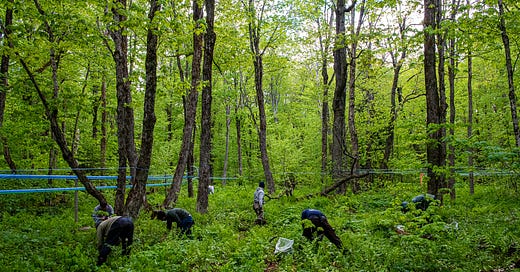

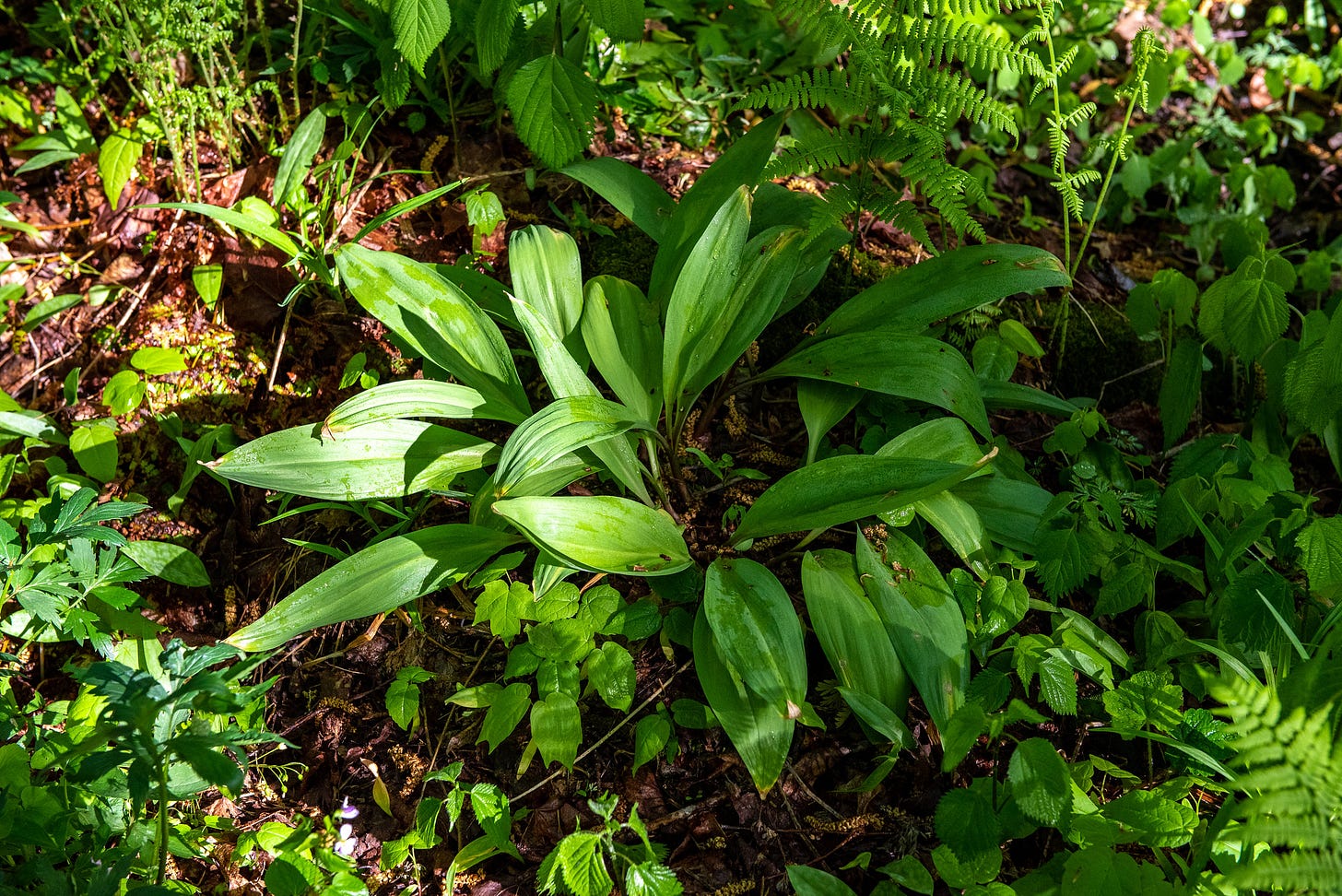
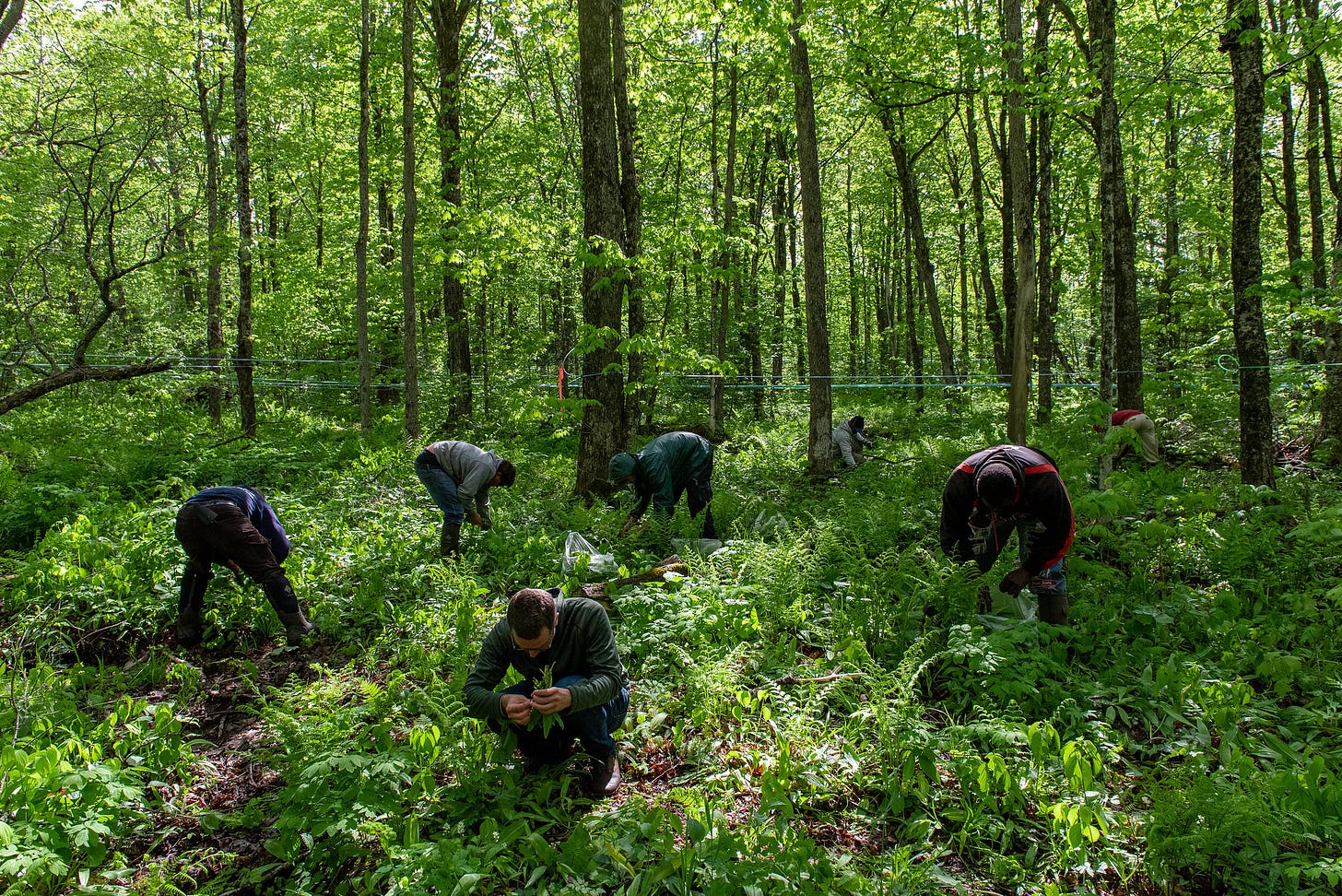
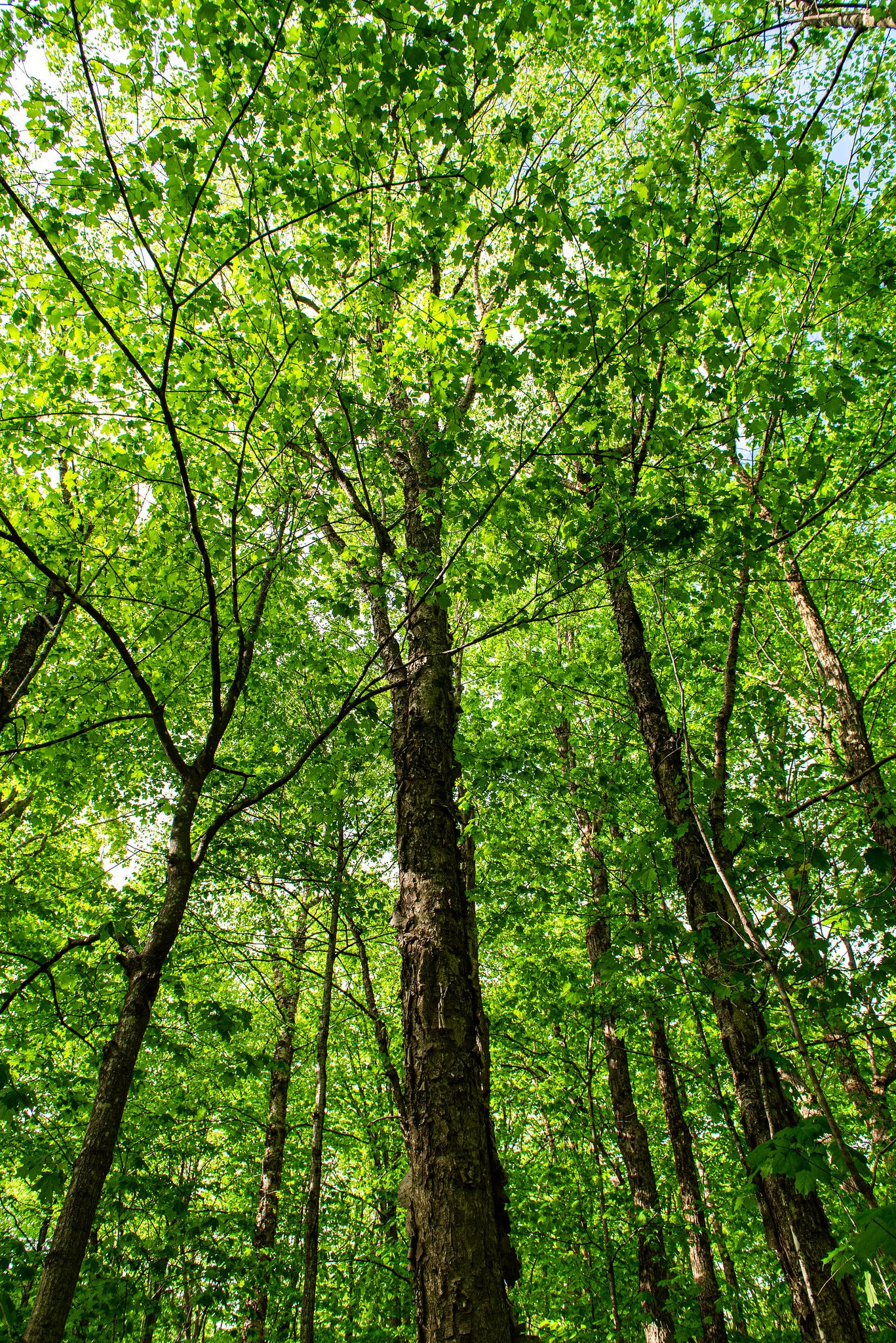
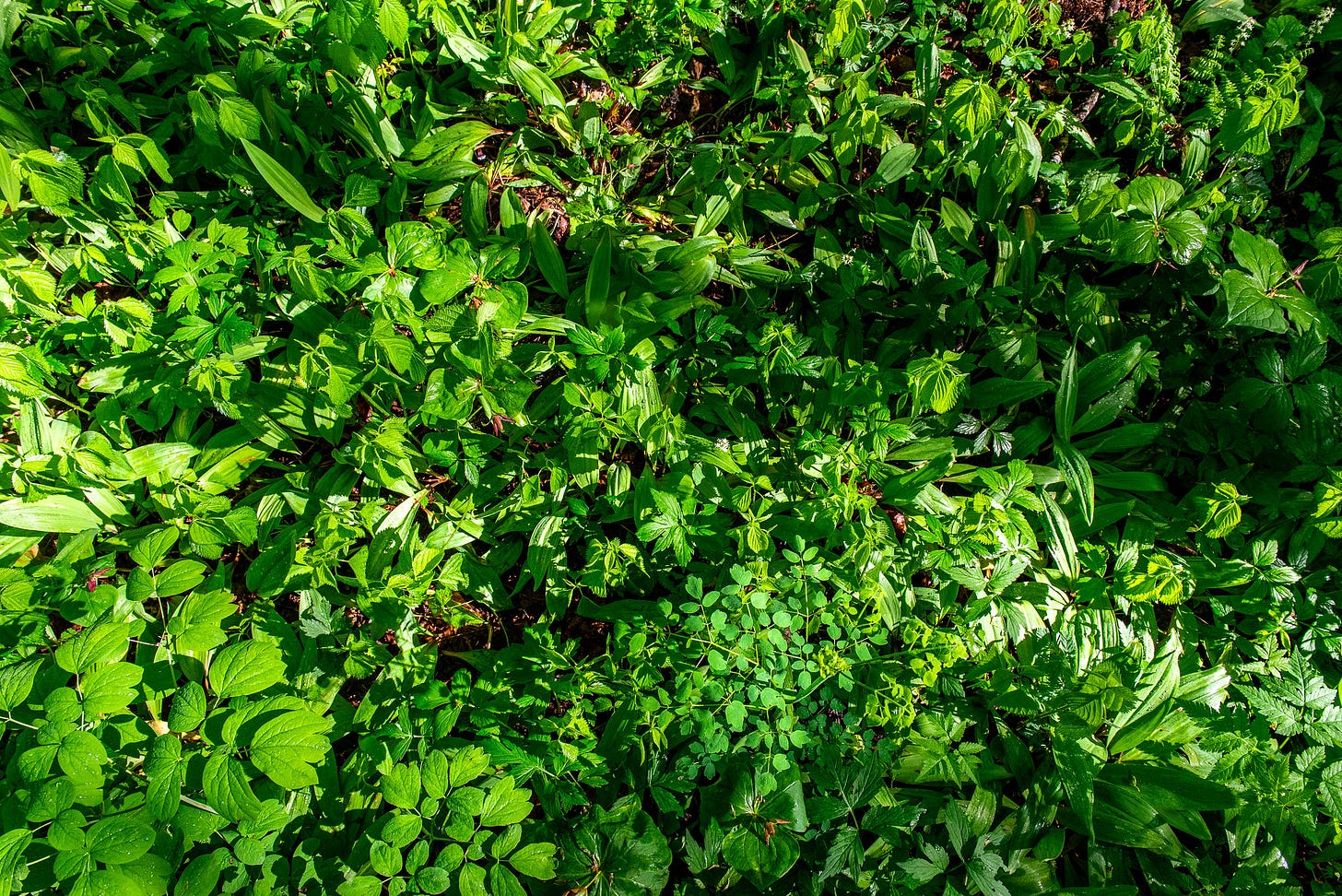
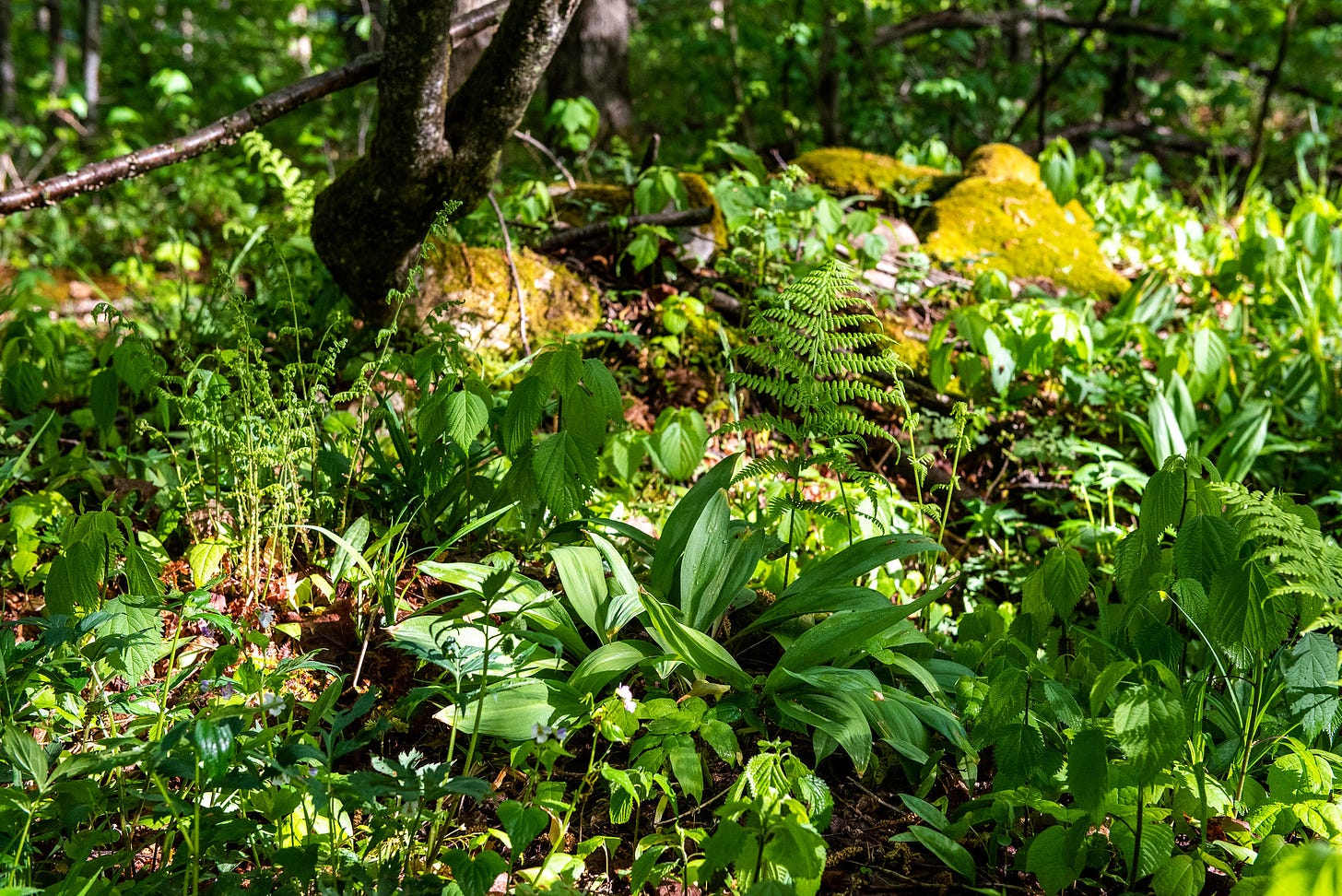
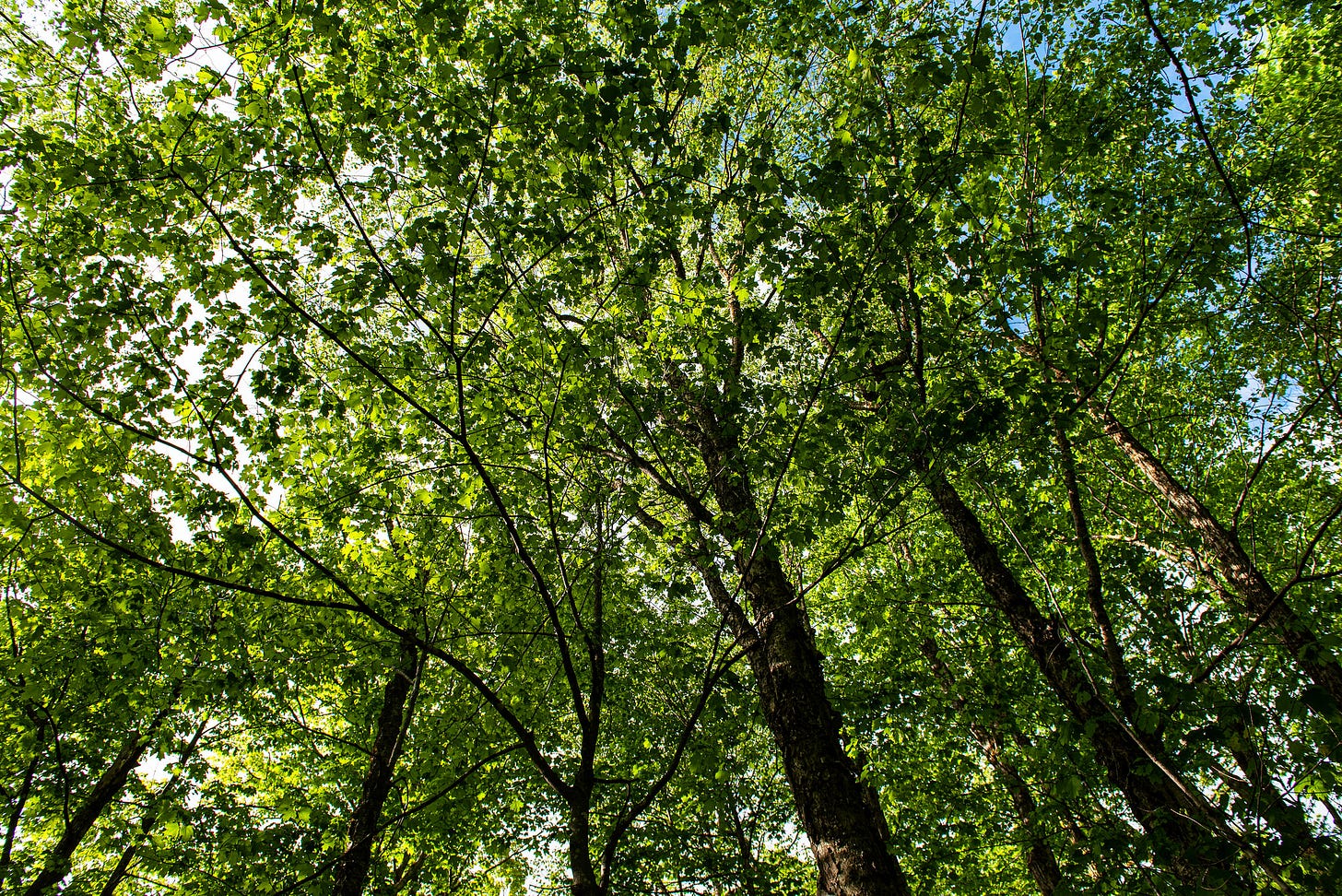
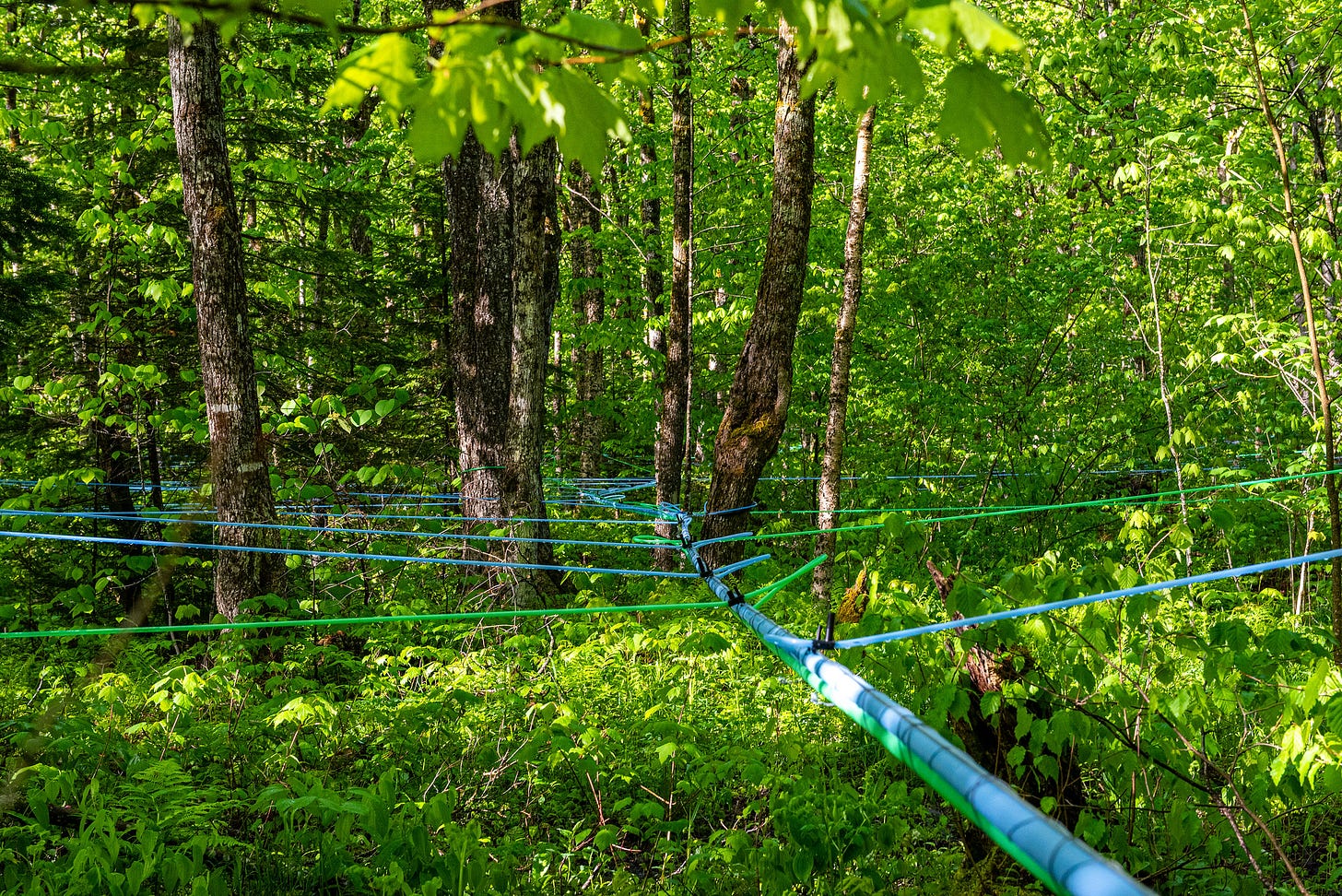
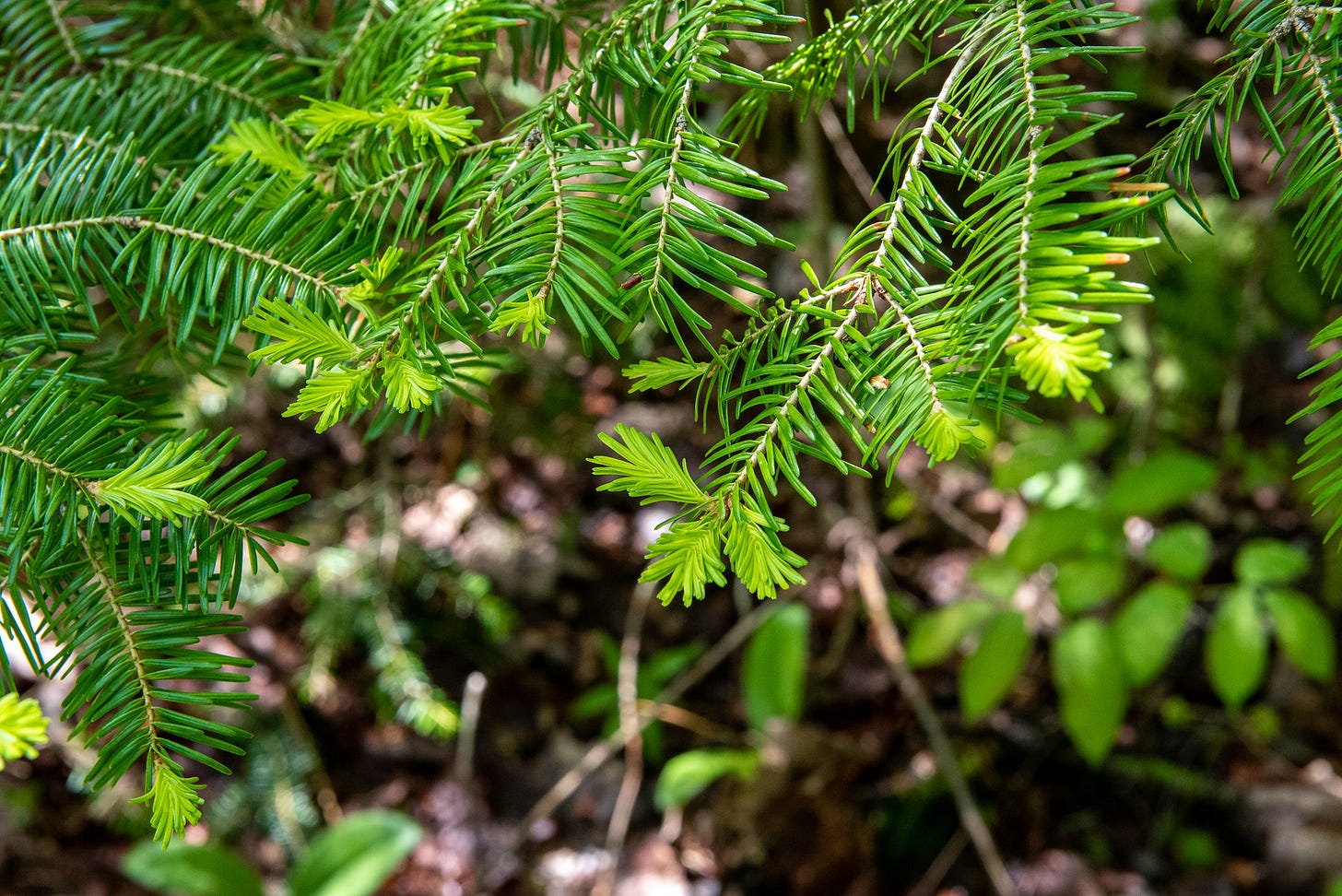
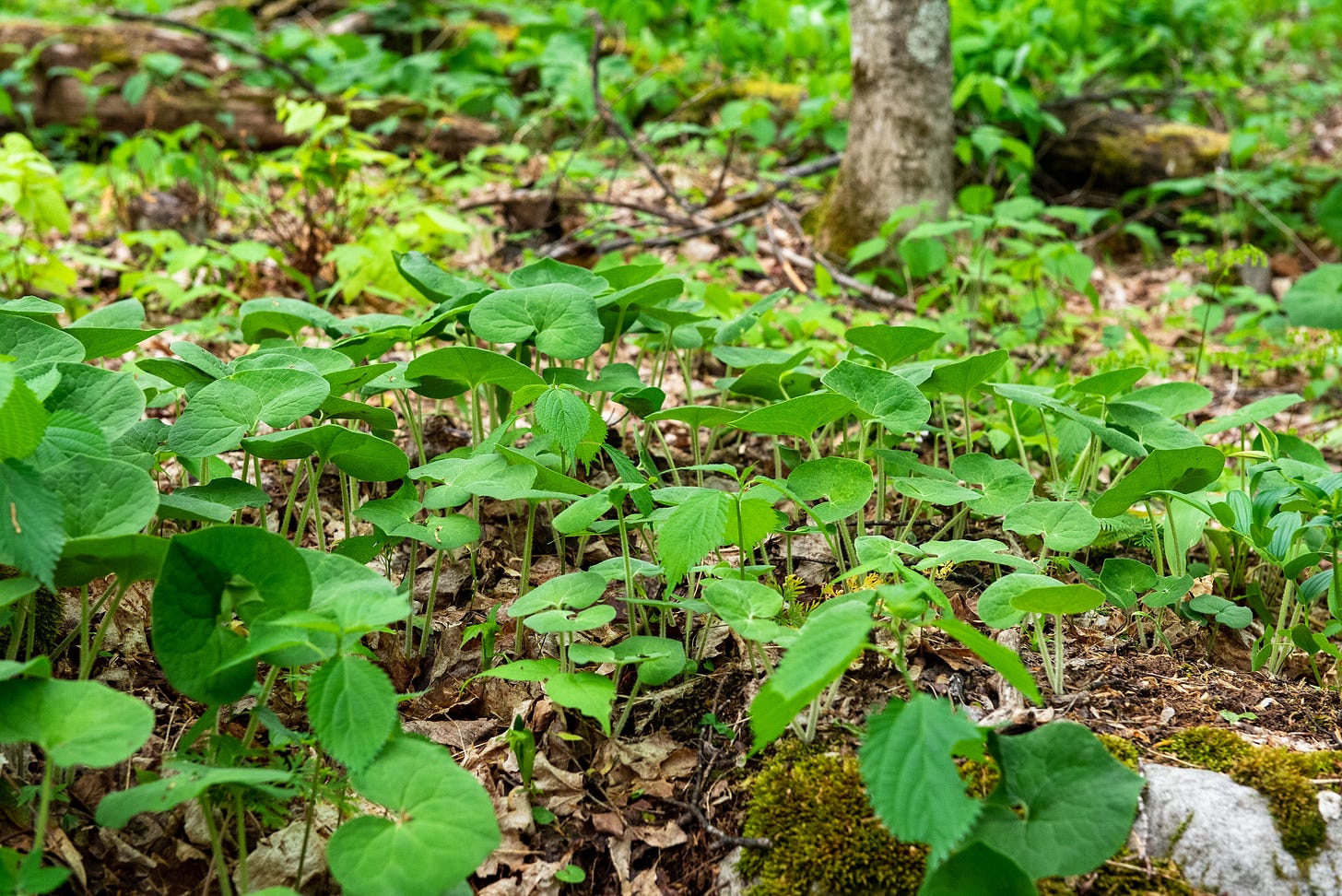

I'm interested to hear what this year's maple syrup yield is like in the northeast given our very mild winter.